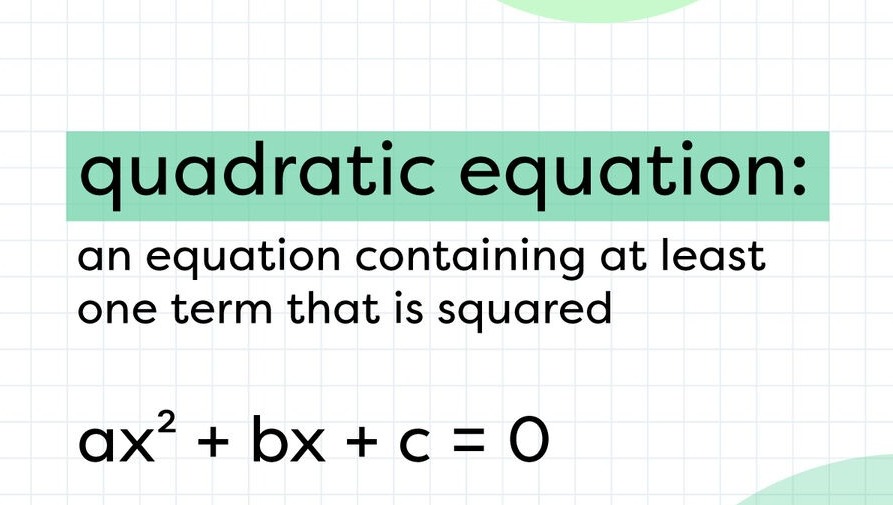
Quadratic Equations
Let’s start with the basics. A quadratic equation is a second-degree polynomial equation, which means the highest power of the variable (usually x) is squared. The general form of a quadratic equation is:
ax2+bx+c=0
- a, b, and c are coefficients, with a not equal to 0.
- x represents the variable we are solving for.
Quadratic Solutions: Factoring and the Quadratic Formula
Quadratic equations can be solved using different methods, but two common approaches are factoring and the quadratic formula.
1. Factoring: This involves breaking down the quadratic equation into simpler expressions, finding the factors, and solving for x. For example, if we have x2+5x+6=0, we can factor it as (x+2)(x+3)=0 and solve for x.
2. Quadratic Formula: The quadratic formula is a handy tool for solving any quadratic equation. For the equation ax2+bx+c=0, the quadratic formula is:
x=2a−b±b2−4ac
Learn how to solve Quadratic Equations by clicking here
Real-World Applications
Now, let’s explore why quadratic equations are more than just abstract math problems. They pop up in various real-life scenarios, from physics to finance!
1. Projectile Motion: If you’ve ever wondered how physicists calculate the trajectory of a projectile (like a basketball or a rocket), quadratic equations are the key. The height of the projectile as a function of time is often modeled using a quadratic equation.
2. Finance and Business: Quadratic equations also play a role in finance, helping us analyze profit and loss. For example, the profit P in a business might be modeled by the quadratic equation P=−ax2+bx+c, where x is the quantity of a product sold.


